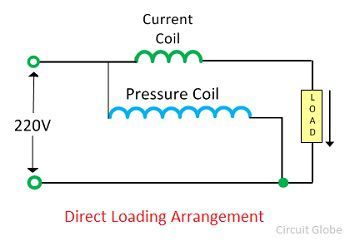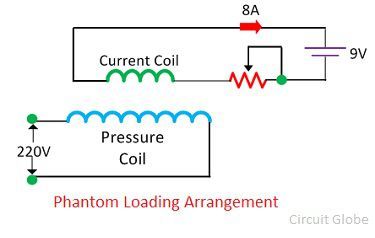Definition: Phantom loading is the phenomena in which the appliances consume electricity even when they turn off. The disc of the energy meter rotates which increases the reading of the meter, but the devices do not consume power. This type of loading is also known as the vampire or virtual loading. The phantom loading mainly occurs in the “electronic” appliances.
The phantom loading is used for examining the current rating ability of the energy meter. The actual loading arrangement will waste a lot of power. The phantom loading consumes very less power as compared to real loading, and because of this reason, it is used for testing the meter.
In phantom loading, the pressure coil and the current coil are separately excited by the supply source. The pressure coil is energised from the small supply voltage, and the current energises the current coil at very small voltages.
The pressure and current coil circuit have low impedance (less obstruction of movement of the electron) because of which highly rated current is passed through it. The total current supplied for the phantom loading is the sum of the pressure coil current which is supplied at normal voltage and the current of the current coil supply at low voltages.
Example of Phantom Loading
Consider the DC energy meter having rating voltage 220V and current 9 Ampere. The resistance of the pressure coil and the current coil is 4400Ω and 0.1Ω respectively. The power consumption of the load by direct and indirect phantom is explained below.
Direct Loading Arrangement
The circuit for direct loading is shown in the figure below. 
The power consumption of the pressure coil circuit is calculated as
Power = (220)2/ 4400 = 48400/4400 = 11watt
The power consumption of the current circuit is expressed as
Power = 220 Χ 9 = 1980watt
The total power consumed by the pressure and current circuit
Power = 11watt + 1980watt = 1991watt
Phantom Loading Arrangement
The circuit of the phantom loading is shown in the figure below.
The power consumption of the pressure coil is given below.
P = (220)2/4400 = 11watt
The current coil of the phantom loading arrangement is separately excited by the battery of the 9V. The power of the current coil is measured as
Power = 9 Χ 9 = 81watt
The total power consumed by the phantom loading is expressed as
Total Power = 11watt + 81watt = 92watt
The above example shows that in phantom loading the pressure and the current coil is separately excited by the meter. Hence the power loss is less in phantom loading as compared to direct loading.

It helps me